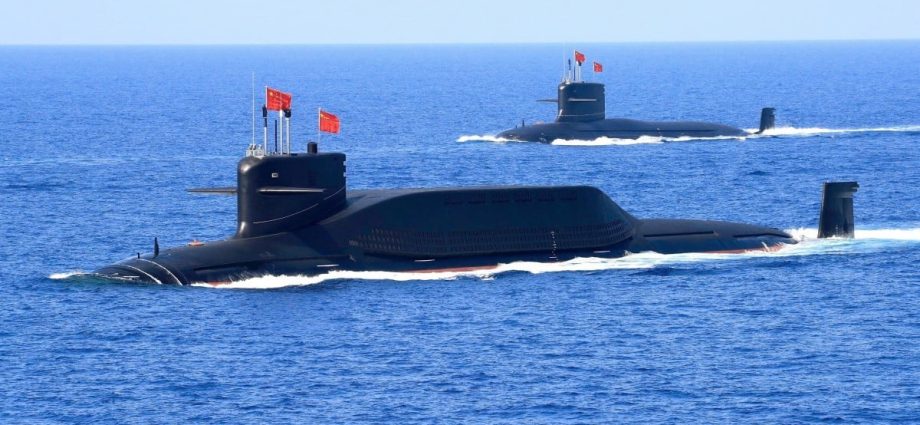
As regional geopolitical attention shifts to Taiwan and the Taiwan Strait, it is easy to overlook the Luzon Strait. Yet it is perhaps the most important strategic strait providing exit and entrance to the South China Sea. Moreover, it is the increasing focus of competing US and China intelligence, surveillance and reconnaissance (ISR) missions.
What makes it so important? The answer must be found in the context of strategic plans of both China and the US in the event of war.
The Luzon Strait is situated between Taiwan and Luzon, the northern portion of the Philippine archipelago. It connects the South China Sea to the Western Pacific. It is important for commercial shipping and cable communications that provide important links among Japan, South Korea and Southeast Asia. Such cables are quickly becoming a security issue in the region.
The South China Sea is a nexus of the US-China strategic contest for domination of the region, and Washington and Beijing have overlapping and converging strategies to win in a kinetic conflict.
Beijing is developing what the US calls an “access/area denial strategy” designed to control China’s “near seas,” particularly the South China Sea, and to prevent access by the US military assets in the event of a conflict. The US response is to prepare to cripple China’s command, control, communications, computer and ISR systems.
This is the “tip of the spear” for both, and both are trying to dominate with it on and under China’s near seas and their straits – particularly the Luzon Strait and the Bashi Channel within it.
For China, the South China Sea has historically been its vulnerable underbelly. It also harbors its vital trade routes, especially for the flow of oil and gas imports.
Most important, the South China Sea provides relative “sanctuary” for its retaliatory-strike nuclear-powered, nuclear-armed submarines based in Yulin on Hainan. These submarines are its deterrent against a first strike on it – something the US, unlike China, has not disavowed.
The US wants to deny China this sanctuary. It uses ISR probes to detect and determine the capabilities of China’s submarines, as well as to track and – in a conflict – target them. So in the event of conflict China would want to avoid having its warships, warplanes and especially its submarines bottled up in the South China Sea where they can be easily detected and destroyed.
Indeed, China would want to prevent this by having these assets break out into the vast Pacific.
Submarine access
Other straits bordering the South China Sea like the Malacca, Sunda and Balabac Straits are too narrow and shallow for submarines to pass through undetected. The Taiwan Strait is adjacent to and heavily monitored by China as well as by Taipei and the US.
This makes Luzon Strait critical in all-out war because the nuclear submarines of both China and the US have a better chance of passing through it undetected. So the Luzon Strait, and in particular the Bashi Channel, have become integrated into the nuclear strategies of both.
The strait is about 250 kilometers wide and contains the Philippine island groups of Batanes and Babuyan that are part of the province of Cagayan. North-south ridges are the prominent topographic features of the Luzon Strait. There are several channels through the ridges, of which the widest and deepest is the Bashi Channel. But all of the channels are deep enough for the passage of submarines.
The US already tries to detect and track China’s nuclear submarines as they enter and exit specially constructed subterranean home berths at Yulin. Indeed, this is the mission of many US ISR probes including the 2001 EP-3 flight that resulted in a collision with a Chinese jet fighter that became a politically dangerous international incident.
So to complete its ISR net that encloses the South China Sea, the US wants to military and intelligence control there to put a “stopper” in the Luzon Strait. The Bashi Channel is the main focus. The US frequently sends anti-submarine maritime patrols and P-8 IRS planes over the strait to detect any submarines using it.
China is particularly interested in topography, water structure and currents there. So is the US. But China is also intent on detecting US submarines moving through the strait.
Although many of its ISR probes are thought to be focused on Taiwan’s defense assets, this may not be so, or at least not the total raison d’être, especially those to the southwest and southeast of Taiwan. Indeed, several times these missions have coincided with the passage of US aircraft-carrier strike groups that are usually accompanied by submarines.
Monitoring and control of the Luzon Strait may be one purpose of the new US access to two military bases in Cagayan province adjacent to the strait. This may well mark the beginning or intensification of a contested military focus on it. Indeed, it may soon rank with the Malacca and Taiwan Straits as tinderboxes for conflict.
If this analysis is correct, it would mean that strategic thinkers in both the US and China are already preparing for conflict – even nuclear conflict. If so, the US-China South China Sea conflicts are just sparring in preparation for a possible existential nuclear contest.
China’s rival claimants and the Association of Southeast Asian Nations (ASEAN), the Philippines in particular, need to appreciate this strategic context and how they are being incorporated or affected by it – and formulate their policies with this in mind.

